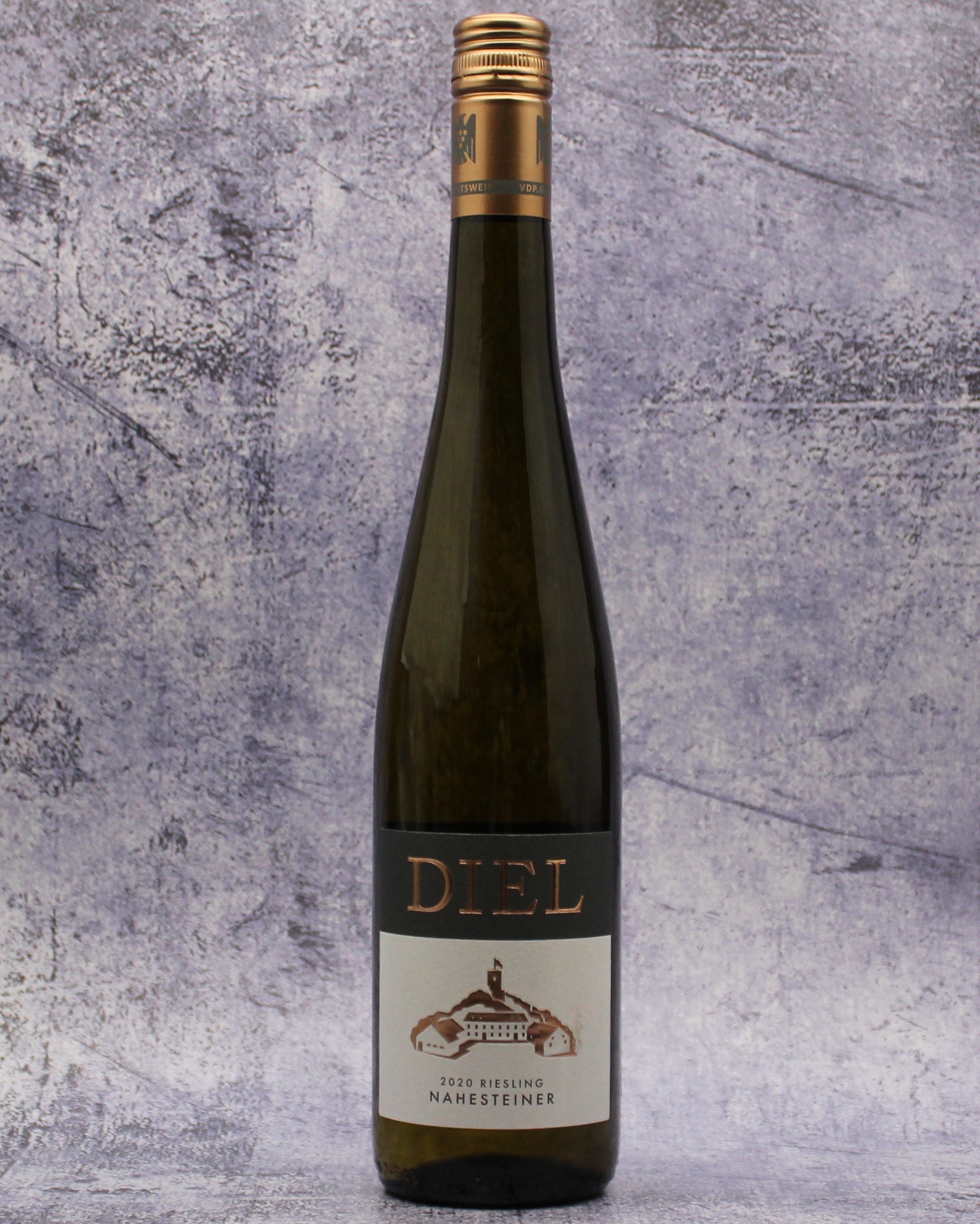Description
From: Nahe, Germany
Varietal: Riesling
Taste and Critical Acclaim: Schlossgut Diel’s 2020 Riesling Nahesteiner is a masterclass in superb Riesling at an affordable price. To quote Jancis Robinson directly and indirectly, this Riesling is a fantastic representation of the Nahe in that it “combines the raciness of the Mosel with the substance of the Rheingau” and is an easy-to-appreciate joy. Flinty, spicy, floral, stone fruit, and minerality reign supreme here. The depth of fruit and non-fruit aromas is immediately noticeable. Though this Riesling is rich and concentrated, its balance between texture, fruit, finesse, and finish is chiseled and impressive from the first introduction to its lingering finish. –E. Lyman, Champion Wine Cellars, September 2024.
“The 2020 Riesling Nahesteiner is deep and concentrated on the nose, showing ripe and matured stone fruit aromas intertwined with flinty and finely phenolic notes. Full- bodied, intense and compact on the palate, this is a rich, ripe and elegant, crystalline and textured Riesling with a long, dense and compact finish.” —Robert Parker’s Wine Advocate, 92 points (December 2022)
Pairing: You could pair this fabulous Riesling with the classics: grilled shrimp, sushi, scallops, Thai cuisine, curries, shrimp or vegetable tempura, spaetzle, and, of course, schnitzel or katsu. Some other pairing options include serving this alongside Coq au Riesling, chicken with mixed mushrooms and cream, choucroute, and, I swear, hotdogs with sauerkraut and mustard. This would also be a fantastic pair with corned beef and cabbage too. We’re sharing Nigella Lawson’s recipe for Coq au Riesling below, and even though this isn’t an Alsatian Riesling, we promise it’ll be a great pair.
Coq au Riesling
By Nigella Lawson
About. Many thanks to the importer, Skurnik, for the following information.
The Schlossgut Diel vineyards, castle and winery are of great historical significance. The winery was purchased by the Diel family in 1802 from Baron Dalberg, who had managed to prevent its confiscation by Napoleon’s troops in 1789. Today, the proprietor and wine maker is Caroline Diel. Diel’s offerings are a study in both terroir and differences in intensity achieved at various levels of ripeness. Diel is one of few who still vinifies each Grosses Gewächs site at each Pradikät level.
Located in the lower Nahe on a steep south-facing slope, the three vineyards Goldloch, Burgberg, and Pittermännchen comprise Diel’s esteemed holdings and were documented as early as 1901 as producing wines of exceptional quality. With nearly thirteen acres, Schlossgut Diel is by far the largest landowner within the steep Goldloch vineyard, a vineyard of clay over bedrock, and whose name evokes miners’ search for gold here in the 17th century. This site is known for producing deep, powerful wines while still maintaining elegance and finesse. Diel holds approximately half of the steep slopes of the Burgberg vineyard, named for the castle Burg Layen. Its clay soil accented by slate and gravel is known for making elegant Riesling that is capable of aging. The smallest of Diel’s holdings (1 hectare) are within the Pittermännchen vineyard which benefits from south-facing slopes and mineral soils of slate, quartz and gravel. The complexity of the soil lends itself to racy wines that express great minerality.
Organic viticulture is practiced as much as the steep slopes permit. The fruit is either whole cluster pressed or, if the vintage necessitates, de-stemmed by hand so as not to break skins and warrant oxidation. Fermentation is carried out spontaneously in stückfass, doppelstück, and cement tanks, with small barrels used for the red wines.
The combination of great vineyard sites across Schlossgut Diel’s 25 hectares, dedicated vineyard management, and meticulous winemaking has led the winery to receive continued acclaim. The wines scrupulously define themselves: the style changes as the vintage dictates but the wines are always clear, sophisticated, and balanced.
Stone soils, stainless steel vinification, and elevage.

